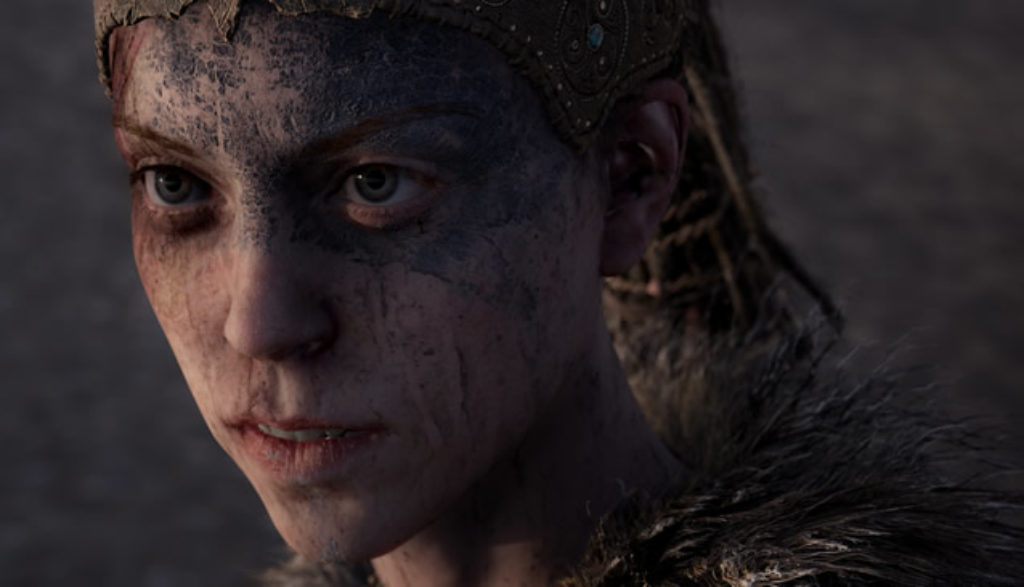
Can you see them?
They’re watching.
Why isn’t she looking?
They’re alive.
Turn back.
Go back, go back, go back!
It’s not safe.
Can you see them?
They’re going to do that to you.
The whispering, disparate voices in Senua’s head comment and worry. They warn. They panic. And as this determined young woman creeps further along in her impassioned quest into the bowels of Hell, surrounded by hanging and impaled corpses, they fearfully cry out.
But she will not turn back.
Ninja Theory’s game Hellblade: Senua’s Sarifice crams players down into the broken mind and wounded body of a woman in a mythical land. This painted and scarred Celt fearfully wades into something of a legendary Norse tale of anguish and pain.
Like her mother before her, young Senua has what we would call in our world mental psychosis. But in her gritty, ancient reality it becomes an affliction that her angry, controlling father identifies as a curse.
In fact, the only person in Senua’s life who has thus far shown her any compassion at all is a young warrior named Dillion. He encouraged Senua in her talents with a sword and helped her struggle against her torments. They formed a quick friendship that then turned to love.
Believing her father’s conviction that her voices are a cursed darkness that taints her, though, Senua blames herself when her village is razed by Vikings and her beloved Dillion is flayed alive. So Senua determines to carry his head to the very depths of Hell itself in the desperate hope of facing the giantess Hela and reclaiming his soul from her.
As dark, gruesome and troubling as that story summary may sound, trust me, it’s but a mere shadow of how this title graphically plays out. The game’s riveting, creepy landscapes are indeed the photorealistic “blending of game and art” that the gamemakers said they were shooting for.
That, however, isn’t necessarily a good thing. From the shifting, gloomy nightmare locations to the horrifically impaled and torn corpses on display, this world is a haunting place to virtually trod.
Add in Senua’s realistically portrayed psychosis—reportedly modeled after descriptions from real-world psychiatrists and mental patients alike—and you’re left with an experience that is mentally and emotionally disturbing.
Doubling down on those unsettling aspects are the many violent sword battles between Senua and her dark demonic foes. These muscled hulks and massive beasts may all be figments of the troubled young woman’s imagination, but they’re fearsome and terrifying nonetheless.
Combat-wise, when Senua’s sword connects with one of these foes, a bloody slash appears across the opponent’s body. By the end of any given battle, a foe will be limping and covered with gashes. And when Senua enters “focus mode”—where the world is set in slow-motion—you see chunks of gore fly off an enemy as she attacks. And, of course, Senua bears the burns, scars and dripping gore of her achingly accumulated conflicts, too.
Torture, murder, a spit-out f-word, self-mutilation, nightmarish spirituality, flashes of grotesque nudity … the content heap only grows higher and higher as its hellish narrative progresses.
There’s no question that Hellblade: Senua’s Sacrifice is truly unlike any game ever created before. It compellingly portrays a very real disease in ways that have never been attempted. But spending long gaming hours in a vividly rendered and fiendishly dark psychotic world isn’t such a great idea … for anyone’s psyche.

After spending more than two decades touring, directing, writing and producing for Christian theater and radio (most recently for Adventures in Odyssey, which he still contributes to), Bob joined the Plugged In staff to help us focus more heavily on video games. He is also one of our primary movie reviewers.